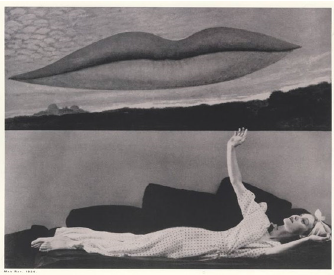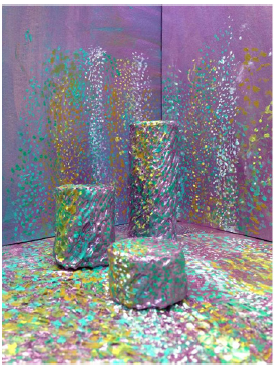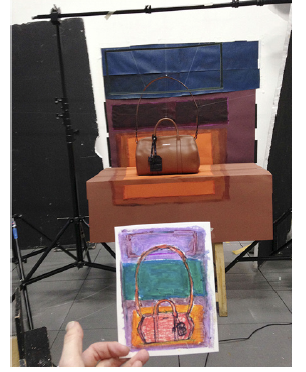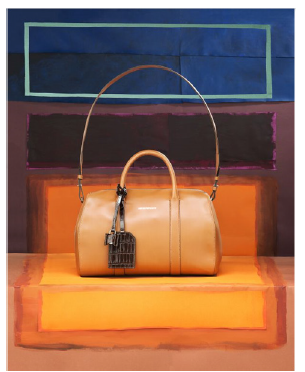- Submissions

Full Text
Trends in Textile Engineering & Fashion Technology
Fashion Photography is at the Crossroads of the Visual Arts (Fashion Photography as a Hybrid Art)
Walid Ghariani*
Textile and Fashion Design, Higher Institute of Fashion Professions of Monastir, University of Monastir, Tunisia
*Corresponding author:Walid Ghariani, Textile and Fashion Design, Higher Institute of Fashion Professions of Monastir, University of Monastir, Tunisia
Submission: February 17, 2023; Published: February 21, 2023

ISSN 2578-0271 Volume8 Issue2
Opinion
It is obvious that fashion photography is only this image made to show or sell clothes and their accessories. It is for its “opponents” a subject that deals only with ephemeral things and random values. However, it is in a broader context, an important topic, as it not only deals with the description of fashion and photographic style, but also artistic and pictorial influences, commercial, social and cultural aspects of fashion and society.
Fashion photography is an artistic activity that involves, by virtue of its function, three (or even more) artistic fields: Fashion, staging and bodily expression. It is a combination of three fundamental elements: A body (model), a piece of clothing to promote and their staging reflecting a whole conception of the photographer exploiting, in most cases, the computer tool (digital).
Moreover, before the invention of photography, Fashion was for a long time represented by painters who showed great interest in clothing and its pictorial representation. We talk about “Painted Fashion”. With the invention of photography, silver and then digital, fashion photography established its status and formed, through time and photographic experiences, its aesthetics. It has thus become an art in its own right with its rather special relationships with other artistic forms. By inspiration, by quotation, by borrowing, by cross-checking or by association, there are many experiences that manifest fashion photographers interested in other artistic forms such as painting, scenography, graphics, etc. and thus creating a certain transversality that is quite wanted. However, the painters for their part did not hide their interest in the world of fashion and its imagery. A mutual and reciprocal exchange that spreads in fashion magazines as well as in galleries.
With this in mind, I will explain this transversality between the field of Fashion, painting and photography while relying on examples (Figure 1&2).
Figure 1:Man Ray, Observatory Time - The Lovers.

Figure 2:Man Ray.

Photographic experiments in this sense ranging from those who introduce paintings as a background or decoration of the photo to the realization of large decorations and atmospheres of the photos from the paintings and passing through those who intervene by the technique of painting on their decorations in order to present a photo mixing the pictorial, the ‘scenographic’ with the photographic (digital or silver)
It was Man Ray who started this trend in fashion photography. This is a staging of a model, lying on a sofa, dressed in a white dress with polka dots and raising her arm towards a painting by Man Ray “Observatory Time - The Lovers”.
If Man Ray has opted for the introduction of his work as a backdrop in his fashion photography, other photographers have chosen to reproduce or interpret pictorial works as backgrounds and backdrops for their photo creations. clothing. Cecil Beaton makes it a good example to study. The photos show the use of a single staging: a model (or two) poses in a studio in front of backdrops on which the photographer has painted the works of Henri Matisse (Figure 3).
Figure 3:Quatre photos de mode, Cecil Beaton, Vogue 1949

As part of this transversality, photographers have placed themselves like painters playing with the pictorial “ingredients” in their Fashion photos. Manon Wertenbroek is perfectly positioned in this trend. Combining the manual (painting) and the technique (photographic tools), this young photographer seems to have a particular experience in the representation of Fashion. Following a sketch drawn beforehand, the photographer paints her decor just like a painting by integrating the product to be promoted in order to take a picture of it all (Figure 4-7).
Figure 4:Manon Wertenbroek: Display of a photo before placing the products..

Figure 5:Manon Wertenbroek, bijoux Tectonic, Marie Claire 2014.

Figure 6:The sketch and staging of the product before the shoot.

Figure 7:Manon Wertenbroek, Sac Rivera, Marie Claire 2014.

 a Creative Commons Attribution 4.0 International License. Based on a work at www.crimsonpublishers.com.
Best viewed in
a Creative Commons Attribution 4.0 International License. Based on a work at www.crimsonpublishers.com.
Best viewed in 







.jpg)






























 Editorial Board Registrations
Editorial Board Registrations Submit your Article
Submit your Article Refer a Friend
Refer a Friend Advertise With Us
Advertise With Us
.jpg)






.jpg)














.bmp)
.jpg)
.png)
.jpg)










.jpg)






.png)

.png)



.png)






